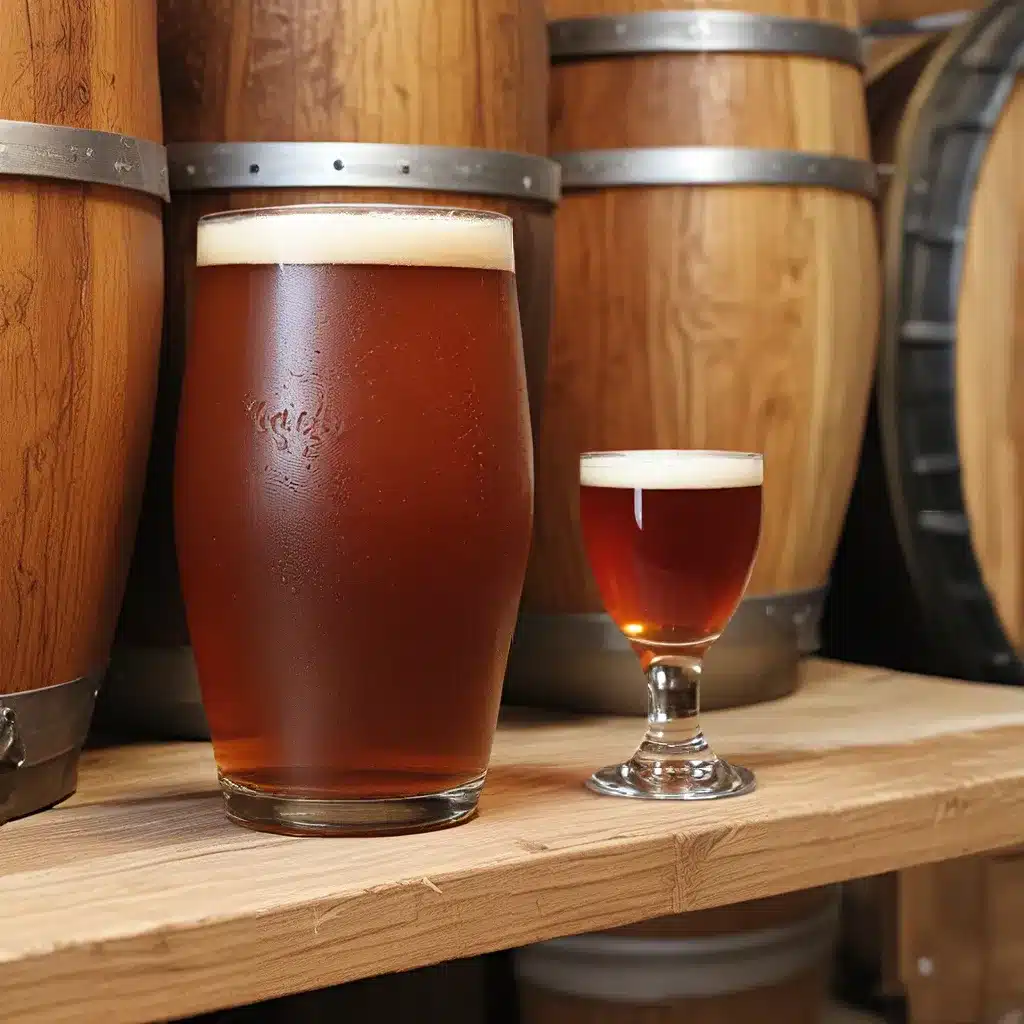
The Humble Grain That Fuels Craft Beer’s Comeback
If you think about it, the story of beer is really the story of malt. This humble grain, once relegated to the sidelines, has quietly risen to become the beating heart of the craft beer renaissance. From the deepest, most robust stouts to the hoppiest, most mind-bending IPAs, malt is the unsung hero that lends each style its distinctive character and flavor.
As a homebrewer myself, I’ve come to revere malt as the true foundation upon which the entire beer-making process rests. Without it, our beloved ales and lagers would be nothing more than watery, flavorless concoctions. But with the right malt selection and handling, a homebrewer can unlock a whole world of complex, captivating brews.
Uncovering Malt’s Magical Transformation
To truly appreciate the magic of malt, we need to dive into the alchemy that takes place as these grains are transformed into liquid gold. It all starts with the humble barley seed, which is first malted through a carefully controlled process of steeping, germination, and kilning.
During this process, the barley’s starches are converted into fermentable sugars, and enzymes are developed that will later help break down those sugars into alcohol. The degree of kilning, or roasting, determines the color and flavor profile of the resulting malt – from the delicate, biscuit-like notes of pale malt to the rich, roasted character of black malt.
But the magic doesn’t stop there. When these malts are mashed, or steeped in hot water, the enzymes spring into action, further breaking down the starches into simpler sugars that the yeast can then transform into alcohol and carbon dioxide. It’s a mesmerizing dance of biochemistry, where each step unlocks new layers of flavor and aroma.
The Malt Mavens: Brewers and Homebrewers
As a homebrewer, I’ve come to see malt as the true heart and soul of my craft. It’s the canvas upon which I can paint with hops, yeast, and other ingredients to create my unique artistic expressions. And I’m not alone in this reverence for malt – the best brewers, both professional and amateur, are true malt mavericks, constantly experimenting and pushing the boundaries of what’s possible.
Take the team at The ABGB in Austin, for example. They’re renowned for their lagers, but when I recently visited, I was blown away by their Superliner IPA. This absolute Simcoe bomb showcased the versatility of malt, with a crisp, light foundation that allowed the pine and grapefruit notes to shine without being overpowered.
And then there’s Jessie Smith from SingleCut Beersmiths, who has a knack for crafting New England-style IPAs that strike the perfect balance between hazy, juicy goodness and a soft, approachable mouthfeel. It’s all about finding that sweet spot where the malt and hops work in harmony.
Mastering the Malt Spectrum
As a homebrewer, I’ve spent countless hours experimenting with different malt varieties, each one offering its own unique contribution to the overall flavor profile. From the bready, toasty notes of Vienna malt to the rich, chocolatey depths of roasted barley, the world of malt is a vast and fascinating playground.
One of my personal favorites is Wheezin’ the Juice, a juicy IPA from Broad Leaf Brewery & Spirits in Michigan. This beer showcases the magic of the Citra and Mosaic hop pairing, but it’s the supporting role of the malt that really makes it shine. The soft, pillowy mouthfeel and lack of caramel character allow the citrus and tropical fruit flavors to take center stage.
And let’s not forget the classics, like the clean, bitterness-forward American IPAs that rely on a solid malt backbone to balance out the hop onslaught. Finestkind from Notch Brewing in Massachusetts is a prime example, with its malty richness rounding out the experience and making it surprisingly drinkable.
Malt-Powered Marvels: Exploring the Spectrum
With so many malt varieties to choose from, the possibilities for homebrewed ales are truly endless. Here’s a quick rundown of some of the key players in the malt universe:
| Malt Type | Flavor Profile | Best Uses |
|---|---|---|
| Pale Malt | Biscuit, bread crust | Lagers, Ales, IPAs |
| Munich Malt | Toasted, bready | Bocks, Dunkels, Altbiers |
| Caramel/Crystal Malt | Caramelized sugar, toffee | Amber Ales, Brown Ales, Porters |
| Chocolate Malt | Roasted, cocoa | Stouts, Porters, Brown Ales |
| Roasted Barley | Intense roasted, coffee | Stouts, Porters, Schwarzbiers |
Whether you’re a seasoned homebrewer or just starting to dip your toes into the craft beer world, understanding the power of malt is key to unlocking a world of flavor. By experimenting with different malt varieties and combinations, you can create brews that truly capture the essence of your personal taste preferences.
A Malt-Centric Future for Homebrewing
As the craft beer revolution continues to evolve, I believe malt will only continue to grow in importance and recognition. Homebrewers and professional brewers alike are increasingly recognizing the vital role that this humble grain plays in shaping the character and complexity of their creations.
In fact, a quick browse through the Great Taste of the Midwest program showcases just how much malt is taking center stage. From the robust, roasty notes of imperial stouts to the delicate, biscuit-like qualities of lagers, malt is the unifying thread that ties the entire beer landscape together.
So, the next time you crack open a cold one, take a moment to appreciate the magic that malt has worked its way. Without this unsung hero, our beloved ales and lagers would be nothing more than watery, flavorless impostors. But with the right malt selection and handling, the humble grain becomes the backbone that supports a whole world of craft beer marvels.
And who knows, maybe one day soon, we’ll be talking about the “Malt Masters” as the true superstars of the brewing world. After all, in the end, it’s the malt that holds the key to unlocking the perfect pint.

